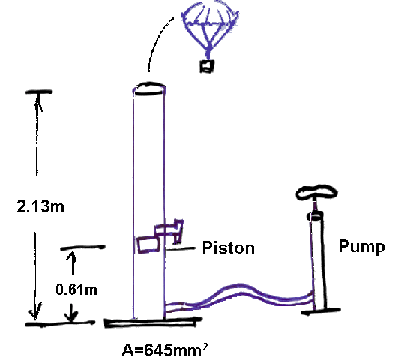
Example 3:

Mass of piston: 1.57Kg
Pinitial = 4.05 bar
Tinitial = 305 K
![]()
Friction = 0
The process is quick, so: Q = 0
How high will the piston go??
A
For an ideal gas:![]()
![]()
B
Ideal gas Low:(constant moles)
![]()
Rearrange
A:
Substitute for dT in
B:
Combining terms:

Rearrange a couple of times:


Finally, integrate from in initial to top of tube:

![]()

![]() For air:
For air:

![]()

What about the maximum height?

![]()

![]()
Using
C:![]()

Rearrange and use
C+Pa:
Integrate:

Evaluate for v:

Once the piston leaves, it is in free fall!

